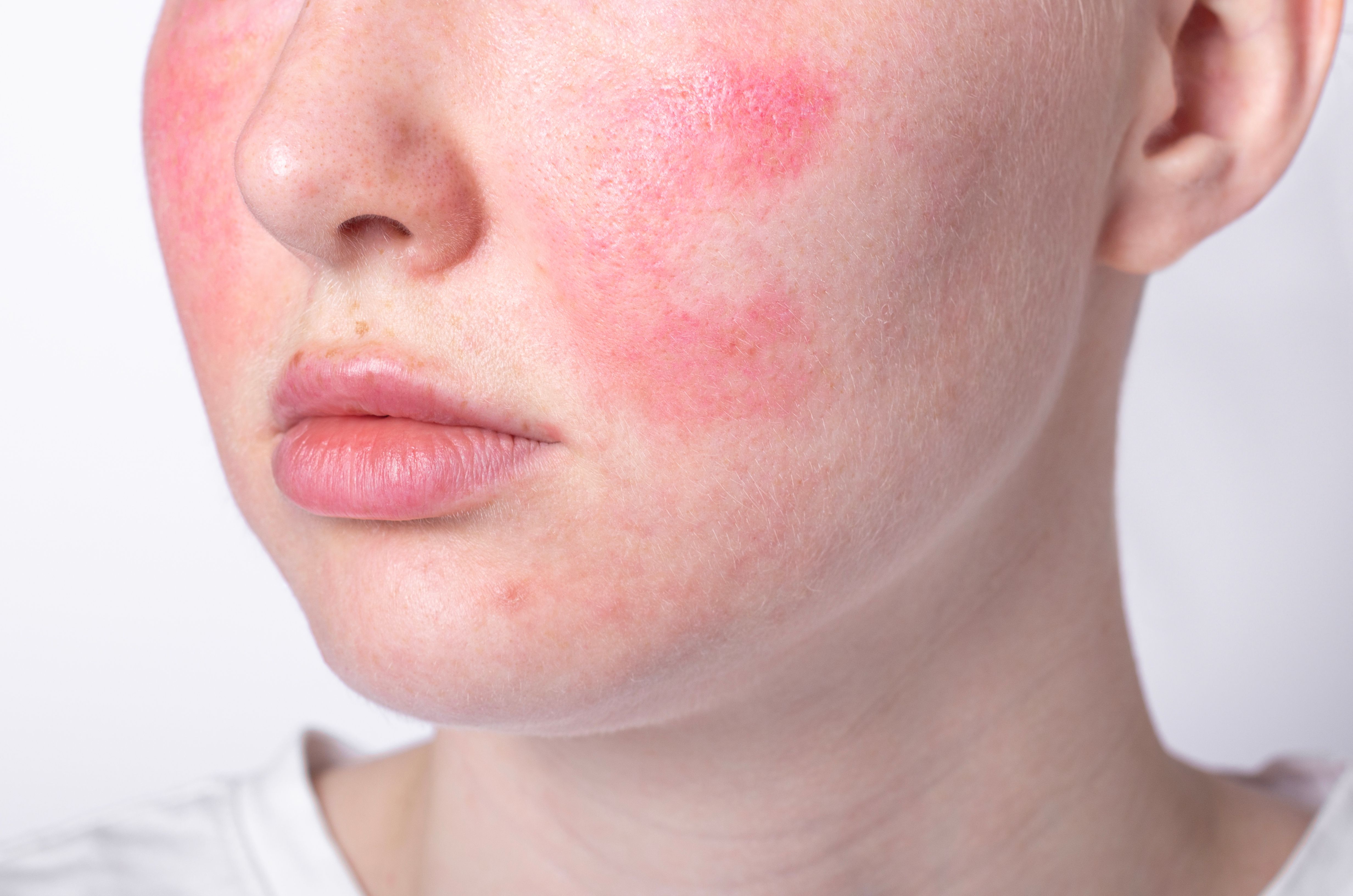- Acne
- Actinic Keratosis
- Aesthetics
- Alopecia
- Atopic Dermatitis
- Buy-and-Bill
- COVID-19
- Case-Based Roundtable
- Chronic Hand Eczema
- Chronic Spontaneous Urticaria
- Drug Watch
- Eczema
- General Dermatology
- Hidradenitis Suppurativa
- Melasma
- NP and PA
- Pediatric Dermatology
- Pigmentary Disorders
- Practice Management
- Precision Medicine and Biologics
- Prurigo Nodularis
- Psoriasis
- Psoriatic Arthritis
- Rare Disease
- Rosacea
- Skin Cancer
- Vitiligo
- Wound Care
Article
Study finds evidence for rosacea subtype progression
A study shows data to suggest there is evidence of subtype progression in rosacea, and that flushing is not a universal characteristic of patients with subtype 1 rosacea.
Montreal - Recent cross-sectional research suggests there is evidence of subtype progression and different associations between the four rosacea subtypes.
“This is the only study that has looked at the possibility of progression of subtypes,” says Jerry Tan, M.D., F.R.C.P.C., adjunct professor, University of Western Ontario, London, Ontario, and a dermatologist in private practice in Windsor, Ontario, Canada, who discussed the research here at a dermatology symposium.
The four rosacea subtypes, erythematotelangiectatic (subtype 1), papulopustular (subtype 2), phymatous (subtype 3), and ocular (subtype 4), have been classified based on primary and secondary clinical features.
Subtype traits
Dr. Tan and colleagues prospectively studied 135 subjects living in northern Germany with rosacea to determine subtype, the primary and secondary traits of the subtype, and fulfillment of subtype criteria symptom development over time. The majority of the patients were of Fitzpatrick phototype I or II and were female.
“We wanted to evaluate correlations between subtypes 1 and 2, which we considered mutually exclusive for analyses, with subtypes 3 and 4,” Dr. Tan says. “We found that when we segregated it that way, subtype 3 and 4 were more highly associated with subtype 2 than with subtype 1.”
Some of the findings from the survey are that patients classified as having subtype 1 rosacea were more likely to have dry facial skin while those with subtype 2 had more oily or greasy skin. The most frequent sites where papulopustules developed were the cheeks and nose in subtype 2.
Prevalence of facial flushing
Another surprising finding of the investigation was comparing the prevalence of facial flushing between subjects, Dr. Tan says. He and investigators found facial flushing was not present in all patients classified as being in subtype 1, despite facial flushing being the hallmark of this subtype. Facial flushing was more common amongst subjects with subtype 1 rosacea, but the difference in facial flushing between patients with subtype I rosacea and subtype 2 rosacea was not statistically significant, p=0.08.
When patients did experience flushing, it was a median of three times per week, and the median duration was 20 minutes.
“Everyone who had flushing had flushing on the cheeks,” Dr. Tan says. “Flushing location progressively declined thereafter from the nose to the forehead.”
The most common sites of flushing were, in descending order, the cheeks, nose, chin, throat and forehead. Sensations related to flushing such as burning, skin tension and itching were significantly more prevalent among patients classified as having subtype 2. The most common sites where papulopustules appeared in subtype 2 were similar to the sites where flushing occurred: cheeks, nose and chin. Amongst subjects categorized as subtype 3, the nose was the leading site where papulopustules appeared, followed by the chin.
“A larger number of phymatous subtype patients had nasal involvement,” Dr. Tan says. “We hypothesize that increased inflammatory lesions at the nose and possibly chin lead to phymatous changes at those sites.”
Eyeing ocular rosacea
Ocular features were more common in patients who had subtype 2 rosacea than in subtype 1 rosacea, Dr. Tan says.
Regarding evidence of subtype progression, patients reported that the first symptoms they experienced were characteristic of erythematotelangiectatic rosacea and that they then develop papulopustular rosacea. Over time, they subsequently develop phymatous rosacea. In contrast, ocular rosacea did not clearly seem to have the same latency of onset. While there is a shorter latency period to developing phymatous rosacea, ocular rosacea appears to be a long-lived condition, explained Dr. Tan. However, the case-definition of ocular rosacea is problematic as there is no singular clinical hallmark of that condition.
“This study provides some evidence, albeit retrospective and prone to recall bias, that there is progression from subtype 1 to 2 to 3,” Dr. Tan says.
It’s premature to say if rosacea treatments, such as topical brimonidine tartrate gel or intense pulsed-light to treat erythema or various therapies to treat the papules and pustules such as topical metronidazole, azelaic acid, or oral agents, can modify the progression of rosacea, according to Dr. Tan.
There has been a dearth of therapies to address the erythema associated with rosacea, with one of the emerging treatments being topical brimonidine tartrate gel. Two recently conducted studies looking at the efficacy of the gel at 0.05 percent concentration compared to vehicle found the active therapy produced greater efficacy. Investigators found similar rates of adverse events between the brimonidine tartrate gel and vehicle (Fowler J, Jarrett M, Moore J, et al. Br J Dermatol. 2012;166(3):633-641).
Disclosures: Dr. Tan is a trialist, consultant, and/or speaker for Galderma, Valeant and Bayer.
Newsletter
Like what you’re reading? Subscribe to Dermatology Times for weekly updates on therapies, innovations, and real-world practice tips.














